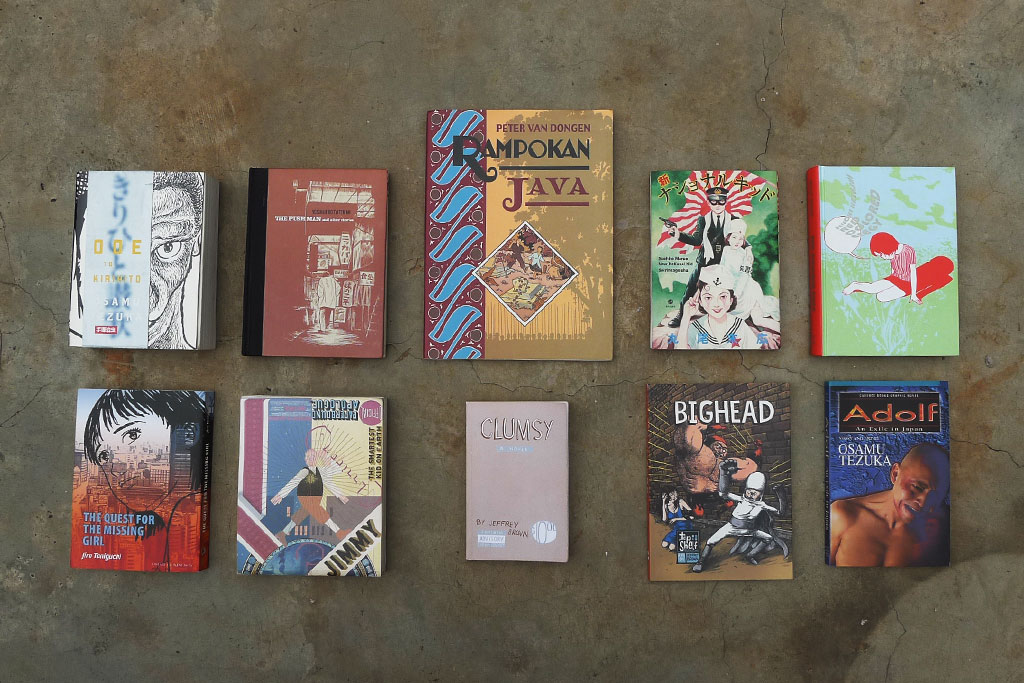
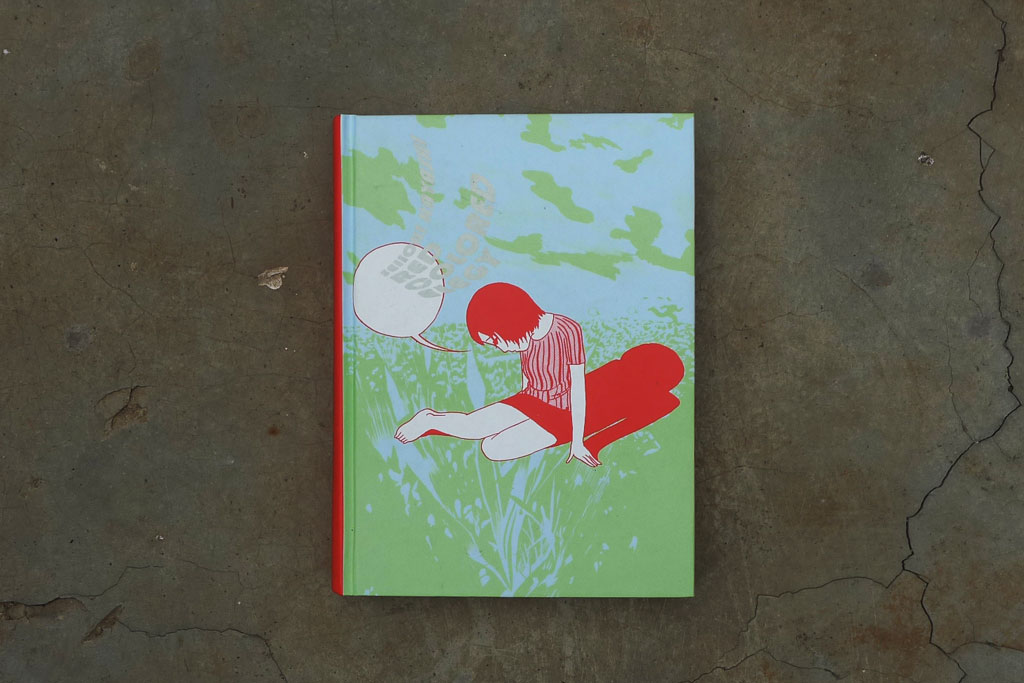
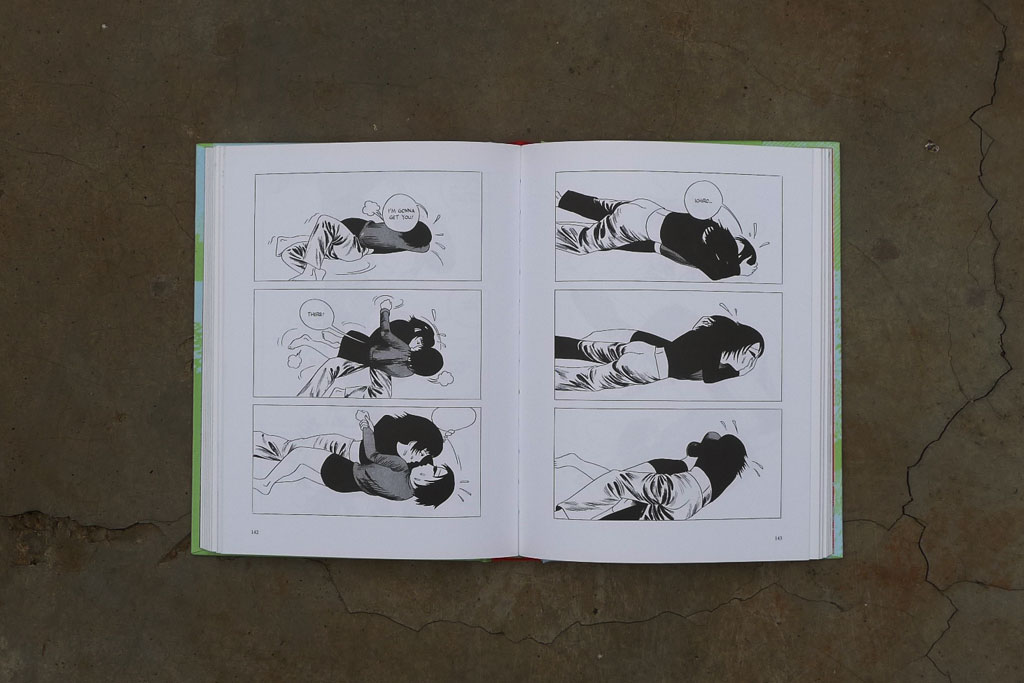
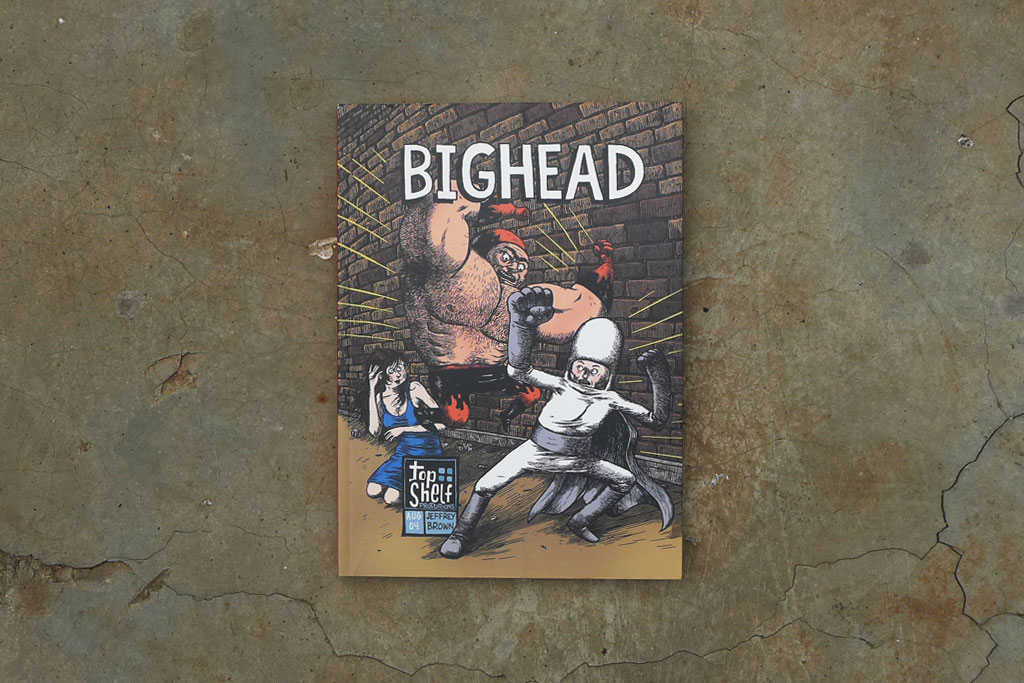
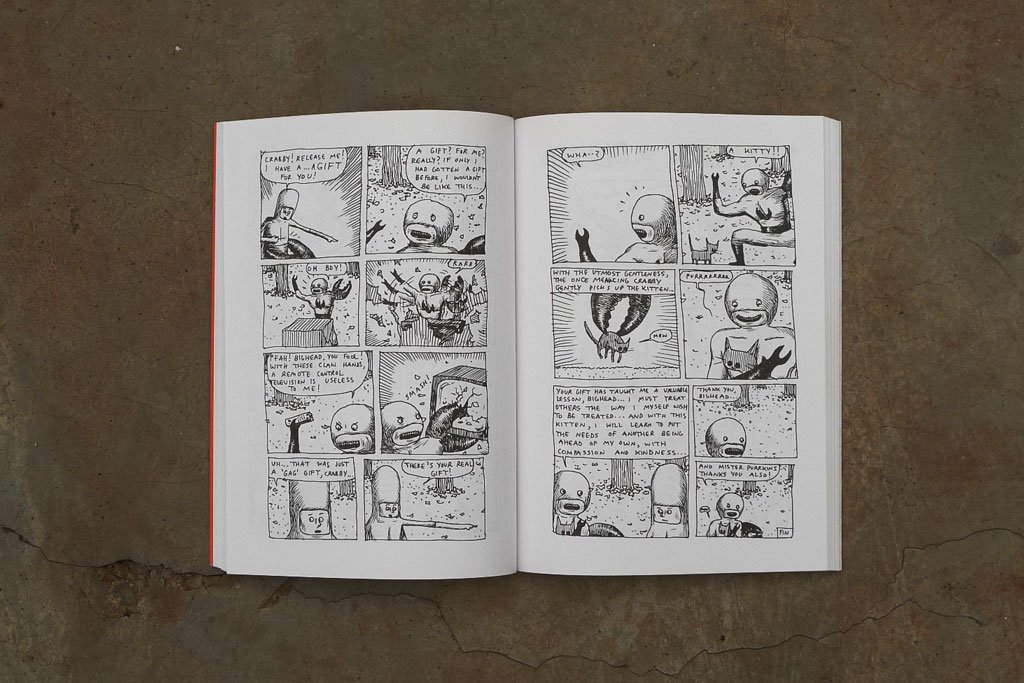
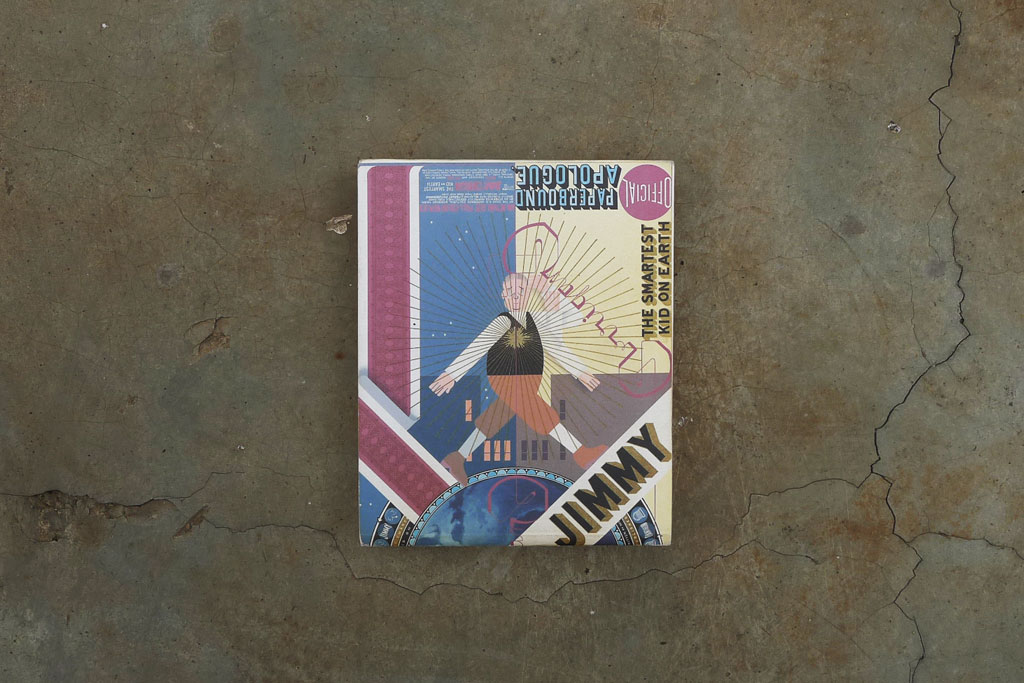
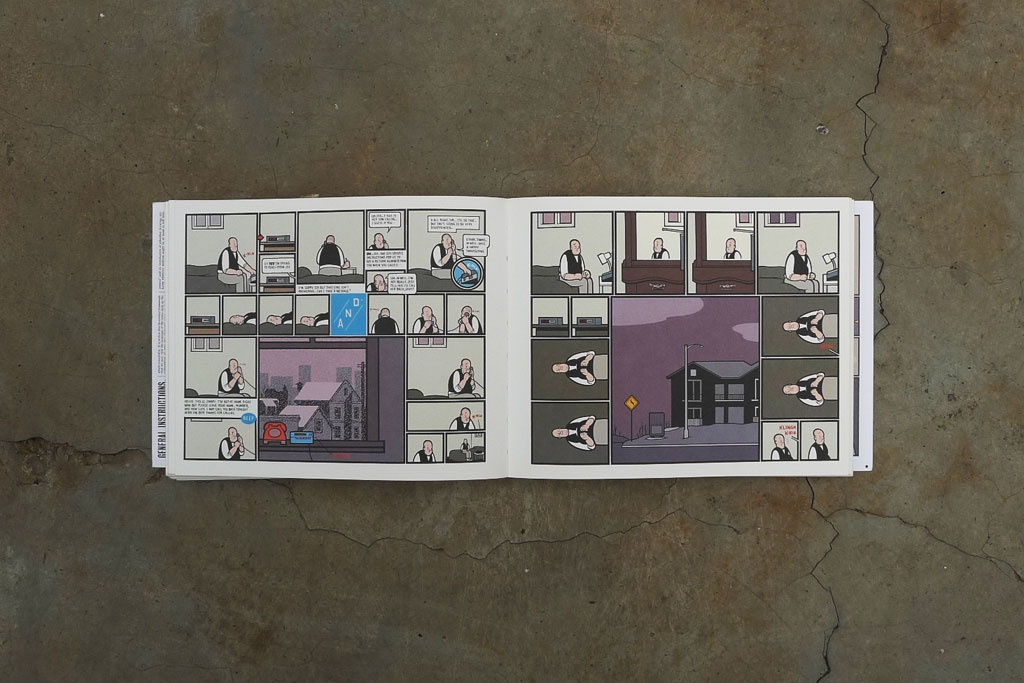
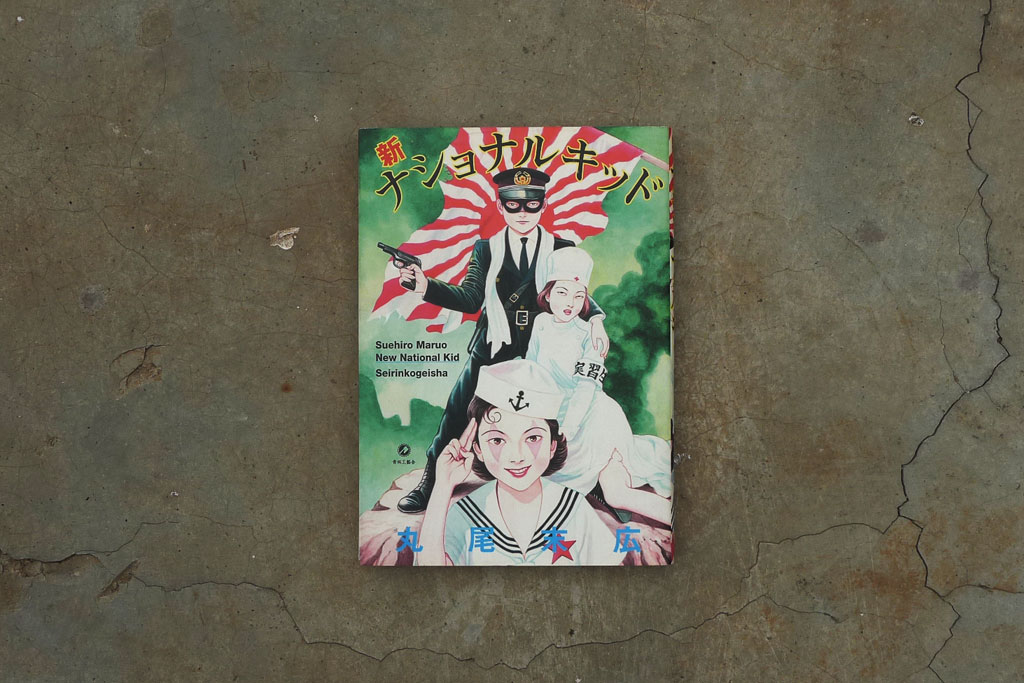
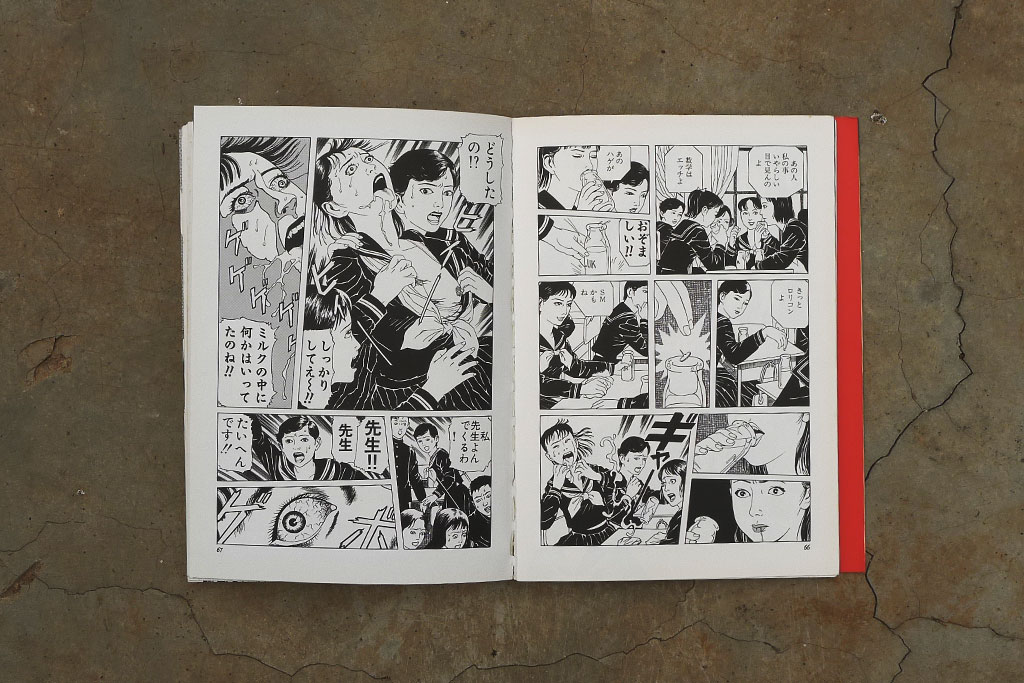
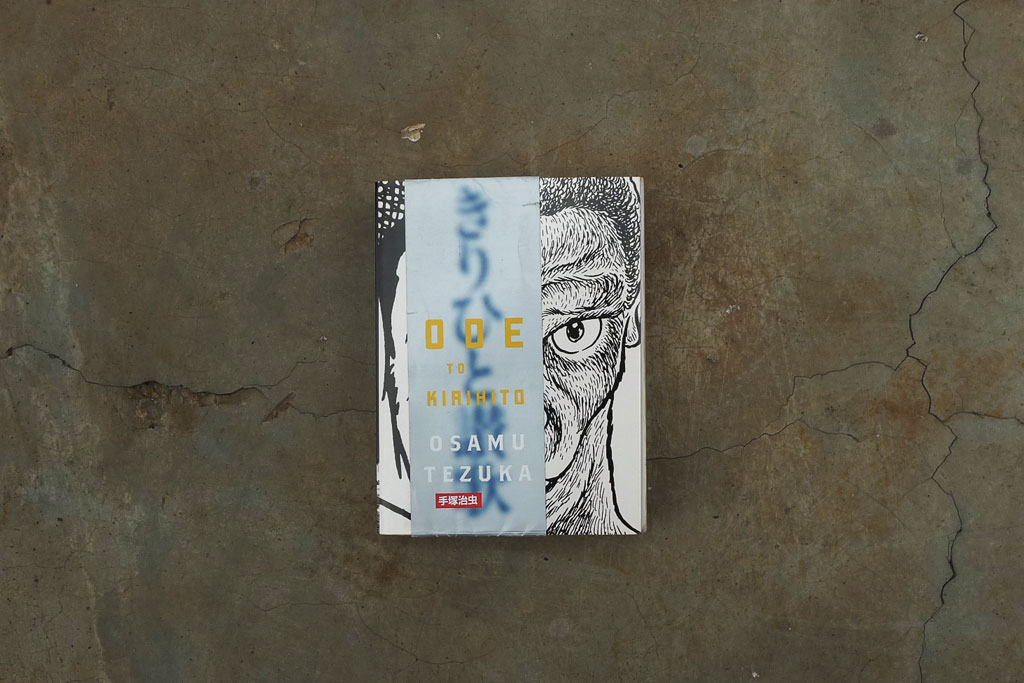
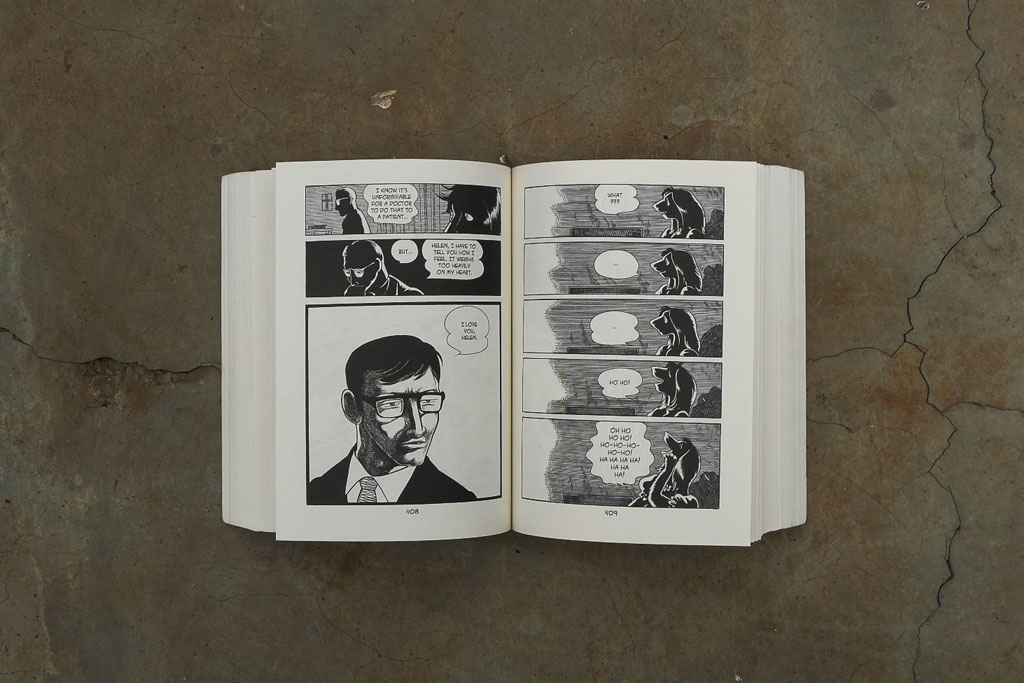
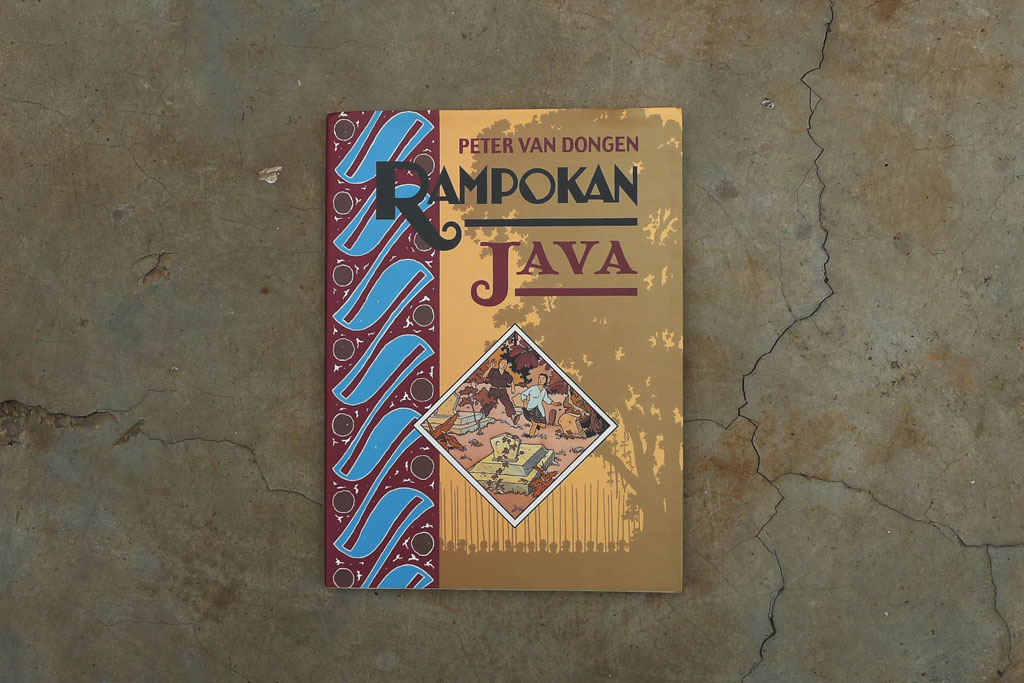
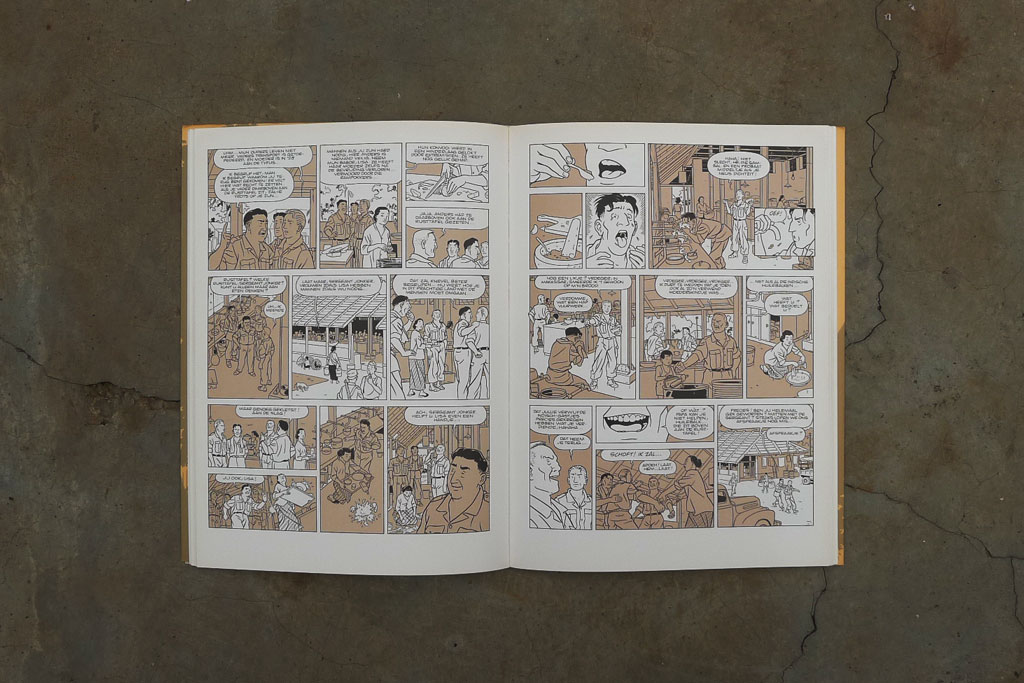
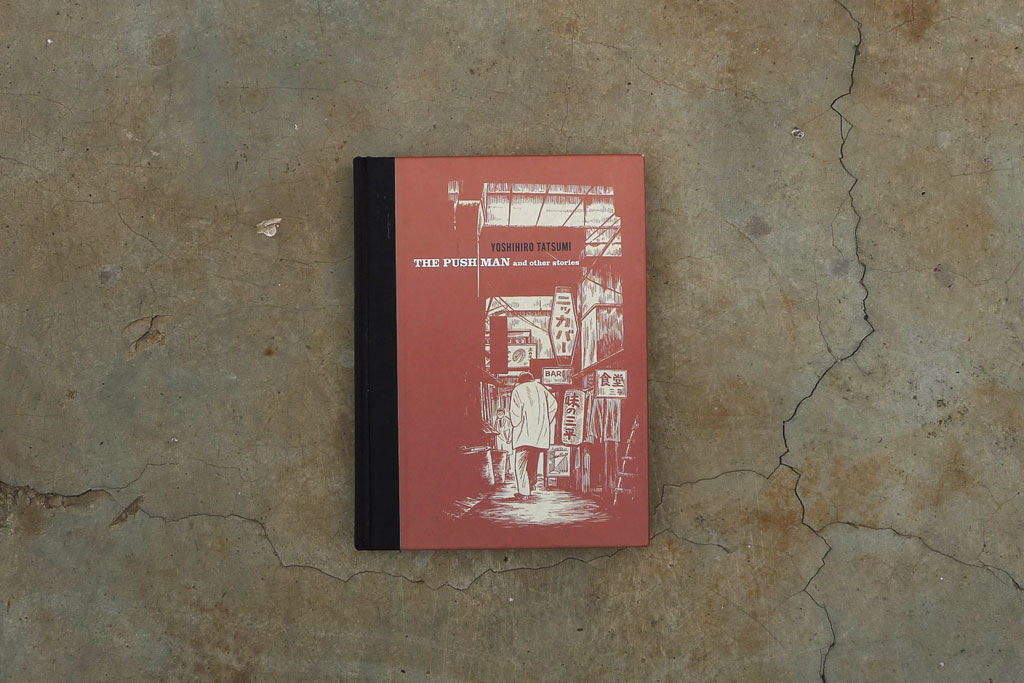
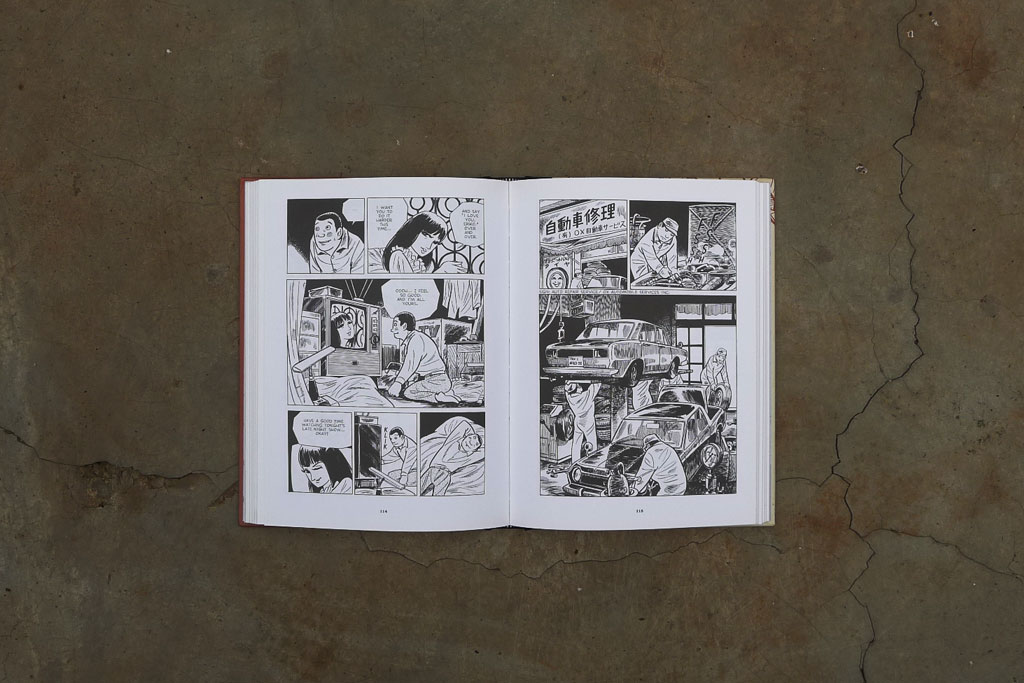
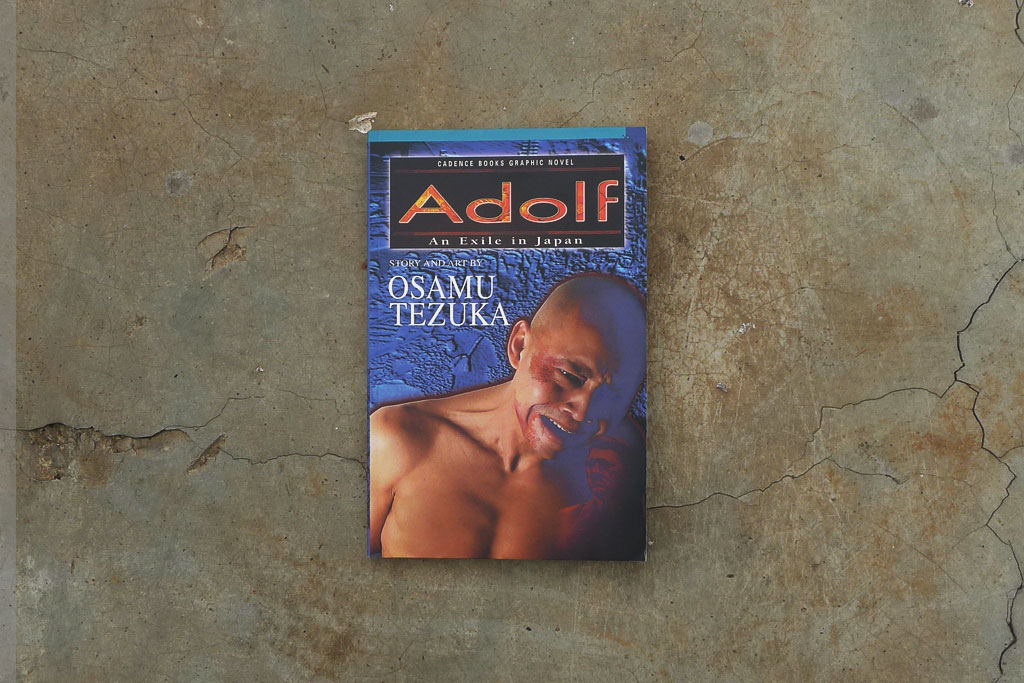
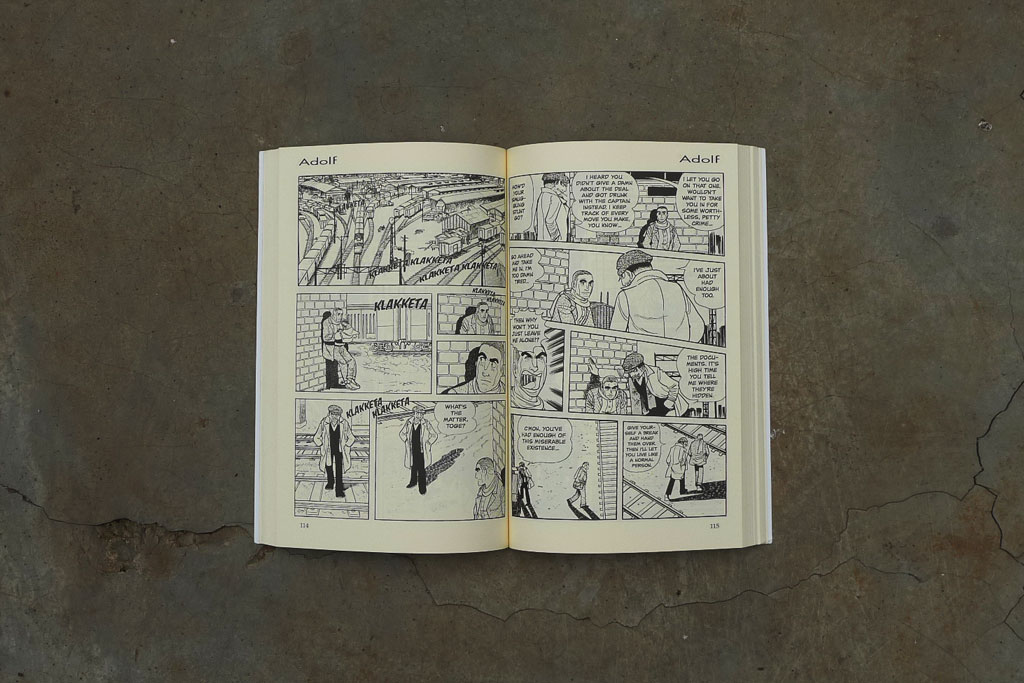
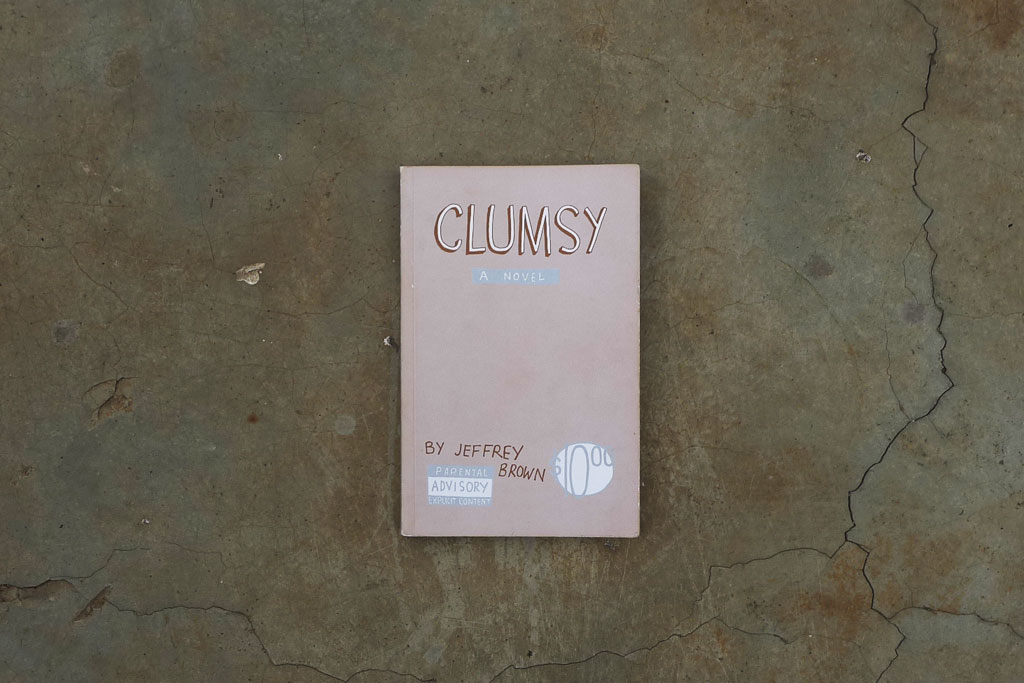
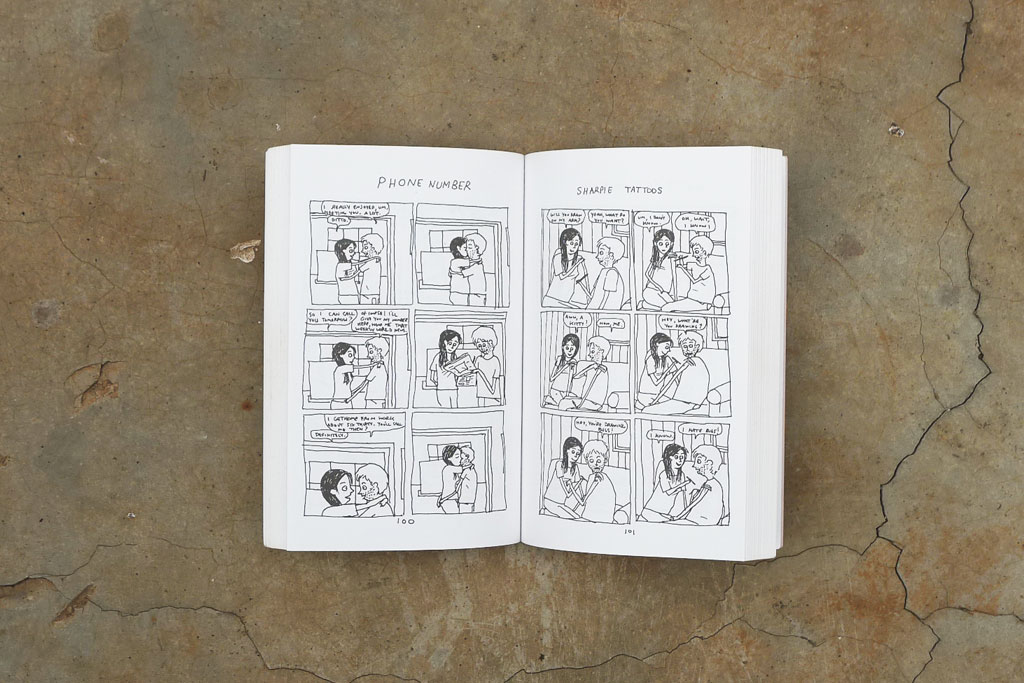
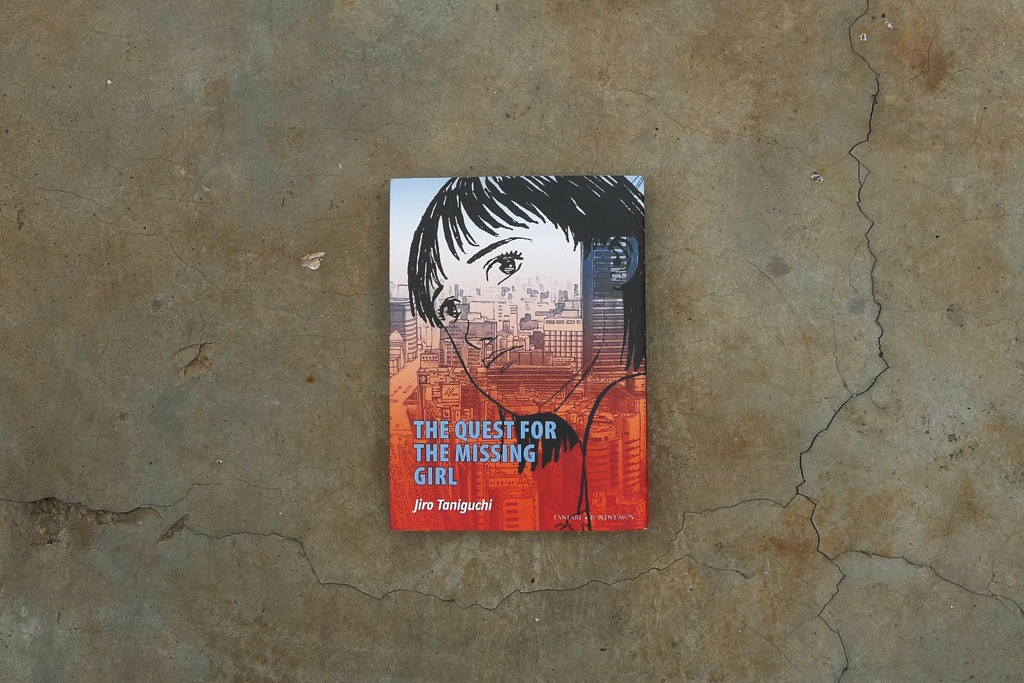
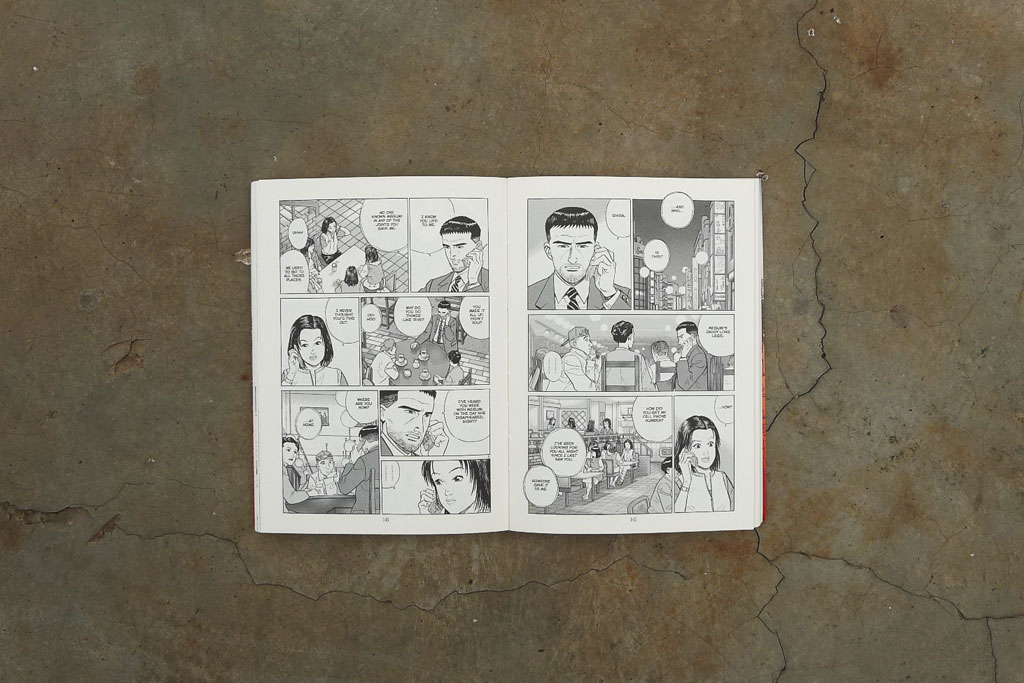
Red Colored Elegy
by: Seiichi Hayashi
Drawn and Quarterly
Written and illustrated in the early 1970s, Red Colored Elegy is a surreal graphic novel by Seiichi Hayashi whose story revolves around the relationship of a volatile young couple in Japan. The animation cell-inspired paneling combined with the surreal events creates a slow and detached pace of reading. The work, though at times dramatic, doesn’t make readers get emotionally involved – we simply bear witness to bits of the couple’s personal moments and thoughts, and fill in the blanks with our own assumptions. Red Colored Elegy is a heart breaking and poetic experience.
Bighead
by: Jeffrey Brown
Top Shelf Production
Superheroes are equipped with great powers and almost always a sense of responsibility. So with a rather boastful name as Bighead, you kind of question the superpowers this white capsule-like costumed superhero has? Author Jeffrey Brown is as clueless as we are. Bighead is described to have a swollen head due to years of being taunted in school. He has nerdy and intellectual traits and fights villains with wit and surprisingly with care. In a few episodes he shows his tender side by giving the villain ‘Bullman’ a talk out of his anger issues or boasts the esteem of villain ‘Heartbroke’ out of misery from, of course, a heartbreak. A comic not to be taken seriously but has the serious effect of giving readers a good chuckle.
Jimmy Corrigan: The Smartest Kid on Earth
by: Chris Ware
Pantheon Books
One of Chris Ware’s first and most acclaimed graphic novel to date, Jimmy Corrigan: The Smartest Kid on Earth analyses a lonely middle-age man’s tragic reunion with a father who abandoned him in childhood. As the story retraces back to Jimmy’s rather uncomfortable history, we often find Jimmy awkwardness and cheerless character retreating into active of being thought as the smartest kid on earth. You will find the arrangement of the scenes to be thorough and bulky with great detailing of the comic figures set in constructed settings and unabashed popping colors. Enhancing each sequence of Jimmy’s emotions and troubled mind.
New National Kid
by: Suehiro Maruo
Seirinkogeisha
With a plethora of decapitation, sexual sadism, disembowelment, suicides, rape, to more fantastic ways of bringing about pain (violent electronic machines wrapped around genitalia, anyone?), New National Kid is a graphic novel that isn’t for everyone. This 1989 graphic novel is disturbing because of its twisted content, and Suehiro Maruo’s detailed, realistic monochrome illustrations make viewing the vicious, often senseless violence an unsettling experience.
Ode to Kirihito
by: Osamu Tezuka
Vertical
Ode to Kirihito is one of Osamu Tezuka’s best graphic novels. It is bizzare, moving, and filled with the author’s views on human morality and the dark places it can go. The story revolves around the search for a cure for a disease called Monmow that turns the infected into dog like creatures before dying. The 800+ page graphic novel is filled with observations of people reacting to the disease, some shunning, some sympathizing – the disease giving way for moral themes to be explored. A must read.
Rampokan Java
by: Peter Van Dongen
Oog & Blik /De Harmonie
One of the striking qualities of Peter Van Dongen’s illustration lies in the cinematic quality you will find in his graphic novels. In Rampokan Java we are brought to a perspective between history and fiction set in Indonesia post-independence era, highlighting the remains of Dutch colonization. Although the version of Rampokan Java we have is in Dutch, we can evaluate the detailed illustration and be astounded by Peter Van Dongen’s precision in presenting the culture and behavior of the characters in that era.
The Push Man and Other Stories
by: Yoshihiro Tatsumi
Drawn & Quarterly
To any fans of Japanese manga, the name Yoshihiro Tatsumi should be familiar. The artist is widely credited as kicking off the gekiga comic book movement (“Dramatic Pictures”- comic books not aimed for children but not quite experimental either). Like many of Tatsumi’s graphic work, “The Push Man and Other Stories” brings mature and adult themes into its pages. With stories of loneliness, disappointment, adultery, and poverty, this graphic novel does have an air of sadness to it, but Tatsumi’s illustration and pacing create a poetic, immersive, and haunting experience out of them.
Adolf: An Exile in Japan
by: Osamu Tezuka
Cadence Books
Dubbed the “Godfather of Manga” in Japan, Ozamu Tezuka, author of Astro Boy, creates a work of fiction that revolve around three men by the name of “Adolf” –including the terrorizing dictator of Germany’s Third Reich. Through this book Ozamu Tezuka’s distinguished illustrative lines and comical expression contrasts with the grim narrative of history presented through the intertwining lives of these three characters. Making it a provocative work that showcases the conflicting nature of World War II.
Clumsy
by: Jeffrey Brown
Top Shelf Production
Another comic book by the wry author Jeffrey Brown, Clumsy takes a serious path of analyzing emotions in relationships. Giving the spotlight to Jeff and Theresa’s relationship, the graphic novel is presented in simple scenes and realistic capture of the young couple. It lends to us the emotional process and depth one goes through when a blooming relationship soon faces its demise. An entire chapter – which is relatively short – can focus on the couple’s mundane experience in a pottery sale. Another mulls over their long distance relationship.
Illustrated in all-honesty and a sense of uneasiness, the book is a relatable collection for anyone who is in or out of a relationship.
The Quest of the Missing Girl
by: Jiro Taniguchi
Fanfare • Ponent Mon
Quite a dramatic story, “The Quest of the Missing Girl” tells the story of a man whose promise to a friend leads him to look for a missing girl. A grand story with equally grand situations, this work by Jiro Taniguchi is a great example of graphic novels ability to present dramatic storytelling that can rival films and novels. Using the manga’s ability to present believable larger than life situations and exaggerated action, Taniguchi creates a story that is emotionally satisfying.











